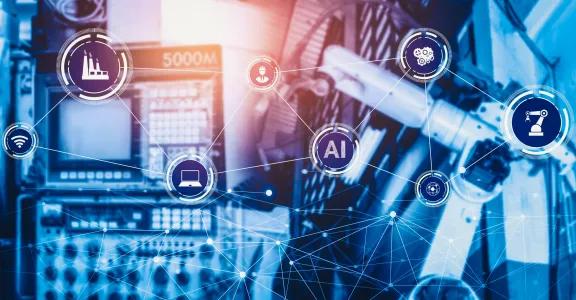
Hoe AI gebruiken voor prognose en gezondheidsmanagement van industriële activa
Dit event wordt georganiseerd door het EluciDATA Lab van Sirris.
Voor wie?
Ingenieurs, technici en onderhoudspersoneel die moeten instaan voor de betrouwbare en efficiënte werking van maakapparatuur en -machines. Deze technieken kunnen ook relevant zijn voor fabrieksmanagers en stafmedewerkers die verantwoordelijk zijn voor strategisch onderhoud en assetmanagement.
De voertaal van het event is Engels.
Waarom is dit relevant voor u?
Bent u klaar om de nieuwste baanbrekende technieken te verkennen voor het ontwerp en onderhoud van industriële activa?
-
U wilt een goed beeld krijgen van uw complexe installaties
Deze activa opereren vaak in complexe industriële omgevingen en worden door diverse factoren beïnvloed, zoals milieuomstandigheden, andere activa in het machinepark en de interactie met een menselijke eindgebruiker (operator).
Er zijn geavanceerde PHM-methoden nodig om de gezondheidsstatus van deze activa te beoordelen, te voldoen aan toenemende functionaliteit- en kwaliteitseisen en vroegtijdig te waarschuwen voor mogelijke storingen.
> Tijdens het event krijgt u een ruim overzicht van geavanceerde PHM-technieken.
- U wilt de concurrentie een stap voorblijven
Door gebruik te maken van PHM, kunnen bedrijven waardevolle kennis verwerven, een grotere operationele efficiëntie bereiken en hun dienst na verkoop verbeteren. Mis deze kans niet om de concurrentie een stap voor te blijven in het ontwerp en onderhoud van industriële activa!
Op het programma:
> Keynote presentaties van toonaangevende industriële bedrijven
>Geavanceerde onderzoeksresultaten geïllustreerd aan de hand van concrete industriële praktijkvoorbeelden
Wat levert het event u op?
Tijdens dit thema-event krijgt u de kans om:
- meer te weten te komen over de mogelijkheden van PHM in een industriële context;
- inspiratie op te doen uit praktijkvoorbeelden;
- met experts te praten en vragen te stellen;
- met vakgenoten de uitdagingen van PHM voor industriële activa te bespreken;
- te netwerken met vakgenoten.
Programma (voorlopig)
De voertaal van het event is Engels
12:00: Lunch
13:00: Welcome
13:30: Setting the context
13:40: Reducing the cost of energy using data - Joris Boeye, ZF Wind Power Antwerpen NV
ZF Wind Power develops digital products and services that increase the availability of connected wind turbines. These solutions build on the market's changing attitude towards data sharing between suppliers, OEMs and wind farm operators. By reducing technical barriers for field data exchange and integrating with a Digital Twin, ZF's domain expertise can be leveraged in various ways: this brings benefits in inventory optimization, to reduce downtime and to increase the energy output for our customers.
14:05: Big data analytics for PV plant operation: Benchmarking components with early prediction of losses and failure - Gofran Chowdhury, 3E
3E will show you some results of the R&D activities carried out in the framework of the multiple EU projects. We will talk about how monitoring data can be used for early prediction of losses from soiling, PV degradation,and transformers. In addition, we will present the preliminary results of component benchmarking based on our SynaptiQ database.
14:30: Coffee Break
14:40: An overview of the current state of the art in Prognostic and Health Management based on several real-world industrial use cases:
- From anomaly scores to discrete predictions - Vincent Vercruyssen, DTAI, KU Leuven
Anomaly detection methods assign a real-valued score to each datapoint in a dataset that correlates with how anomalous the method thinks the datapoint is. These scores need to be transformed into discrete predictions by setting a threshold; if the score is higher than the threshold, the datapoint is an anomaly, otherwise it is normal. The standard way to do this is to set the threshold such that the proportion of scores above it equals the expected proportion of anomalies in the dataset, i.e., the contamination factor. However, in most real-world problems, such as identifying abnormal behaviours in wind turbine data, the contamination factor is unknown. In this talk, I will discuss two technical methods we designed to help estimate the contamination factor. - Exploitation of Transfer Learning techniques for condition monitoring of rotating machinery - Konstantinos Gryllias, LMSD, KU Leuven
State-of-the-art machine learning models remain data-intensive, relying on massive data for model training. However, an extensive training dataset is not always accessible in practice due to the expensive or time consuming data collection and annotation process. The data-deficiency issue may limit the expressive power of the ML models and deteriorate the models’ performance, thus has become one of the weakest spots of ML techniques. Nowadays Transfer Learning techniques (real to real, simulation to real) are proposed as an alternative to accelerate the preparation of a model. Thus in this short talk Transfer Learning approaches will be briefly presented and some applications with focus on monitoring of rotating machinery (at a component level e.g. bearings and at a system level e.g. wind turbines) will be highlighted. - Advanced techniques for automatic tool wear inspection - Robbert Verbeke, Sirris
For many manufacturing companies, the replacement of tools constitutes a significant share of the operating cost. As tools get more worn, the quality of the produced part diminishes. For this reason, tools are typically replaced after a fixed time long before such quality degradation can occur. By automatically monitoring the tool status the replacement time of tools can be optimized without sacrificing the quality of the produced parts.
Much research has been done to estimate the tool wear using sensor data such as vibration or acoustic emission as input to an AI model. While these give promising results, the scope of the data was too narrow, for example using a fixed cutting speed during the operations, limiting its usefulness for industrial implementation so far.
We will present results of a multi-modal analysis performed using data generated under different conditions. The sensor data captured are vibration, acoustic emission, and cutting forces. This is supplemented with a high-resolution image taken automatically after each operation.
15:40: Closing Remarks
15:50: Networking reception
16:30: End
Prijs
90 EUR (excl. btw) Dankzij de steun van VLAIO betalen Vlaamse technologiebedrijven slechts 30% van de bovenvermelde prijs (27 EUR, excl. btw).
Algemene voorwaarden
- Facturen worden na het event verstuurd. U kunt onze algemene voorwaarden raadplegen op onze website..
- Als u verhinderd bent, kunt u zich laten vervangen door een collega. Gelieve ons via e-mail (events.admin@sirris.be) de naam van uw collega mee te delen.
- Annuleringen moeten gemeld worden per e-mail naar events.admin@sirris.be. U kunt uw deelname tot 3 werkdagen vóór het event gratis annuleren. Bij annulering na deze datum of niet-deelname zonder annulering, wordt de volledige deelnameprijs gefactureerd.
